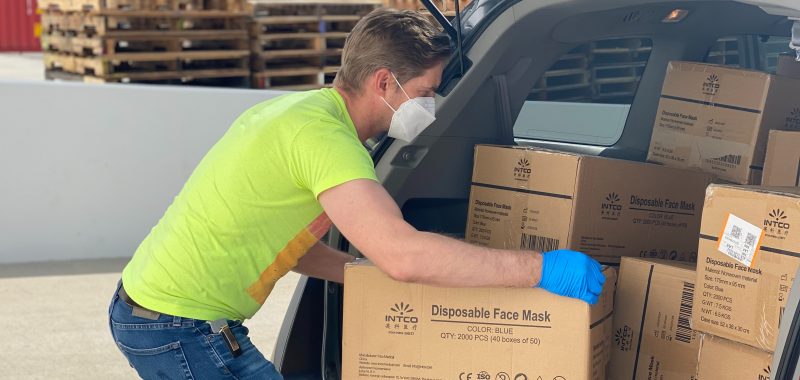At the highest level, public service has always been centered around community and resident needs. Flipping our perspective from provider to user highlights that, for members of the public, government touch points are triggered by certain events. Having a baby, for example, triggers registration action for a birth certificate and social security number. Building a house or opening a business triggers certain permitting and licensing actions.
One of the distinct capabilities of digital government is facilitating these types of interactions, whether they are government-to-business or government-to-citizen. This is important not only for the public-private intersections around common, daily events but for unforeseen events as well.
Event Response and Modern Tech Adoption
The COVID-19 pandemic has been instructive in that it showed us how leaders can leverage crises and other events to drive modern tech adoption resulting in innovation and tangible outcomes.
Events like the pandemic compel chief information officers (CIOs) and other government leaders to work iteratively, resulting in innovation and improved outcomes for residents, businesses and communities. As Gartner research noted, “In the face of these massive challenges, many governments have implemented parallel technologies to ensure continuity of services and, in many cases, improve them.”[i]
Obtaining a permit for outdoor restaurant seating, finding information on vaccine locations or COVID-19 testing sites, or applying for unemployment benefits are common examples of pandemic-related government-to-business and government-to-citizen interactions that required new government responses.
In many examples, the pandemic drove the adoption or expansion of enterprise data platforms, especially as the ensuing challenges brought a new recognition of the need for central data repositories.
The Los Angeles Controller’s Office, for example, used its open data platform to fuel a food access map to serve increased need. Connecticut expanded its use of its open data program to develop a framework for expanded interagency collaboration. These enhanced connections facilitated weekly official updates that met the public’s demand for in-depth and contextualized information. In addition, timely and accurate data supported critical decisions across agencies and jurisdictions on public health and school learning models.
A key nuance here is that events not only trigger interactions, but public buy-in for technology adoption also spikes in response to an incident or obvious need.
Proactive Service Models
This presents a unique and still-open window of opportunity for government leaders to become more proactive in their approach. Public sector CIOs and other leaders can advance service model maturity by focusing on events that trigger business and resident engagement.
Beyond COVID-19, governments must examine what those triggering events look like in their jurisdictions and for their constituencies. Where is there opportunity to truly break down barriers between service providers and service users? What can provide constituents with a seamless interaction during a commonly occurring event? Using those points of interaction to drive modern tech adoption can answer those questions with specific outcomes in mind. It can also help governments:
- Secure and maintain funding
- Achieve broad buy-in of policy and projects
- Illustrate visible impact with citizen-facing wins
What’s more, this approach moves government service from reactive to proactive to predictive. At these later stages, people and communities are served before needs even surface. This trajectory holds great promise for tackling some of society’s greatest challenges. At the same time, leveraging events for meaningful action promotes positive outcomes in the public’s day-to-day interactions with government. These functional connections between constituents and government are the building blocks of thriving, successful communities.
Interested in becoming a Featured Contributor? Email topics you’re interested in covering for GovLoop to featuredcontributors@govloop.com. And to read more from our Spring 2021 Cohort, here is a full list of every Featured Contributor during this cohort.
Meredith Trimble is a former municipal official and Town Council Acting Chair, who focused on strategic planning, annual budgeting and bonded infrastructure projects. Her government experience also includes posts in both federal and state-level executive branch agencies: Associate Editor of the Federal Election Commission’s FEC Record; and Director of Education for the CT Office of State Ethics. In her current role as a Content Manager, Editorial with Tyler Technologies, Inc., she writes content to help empower those who serve the public. Her current focus is to help facilitate data-enabled organizations and create connections between governments and those they serve.





Leave a Reply
You must be logged in to post a comment.